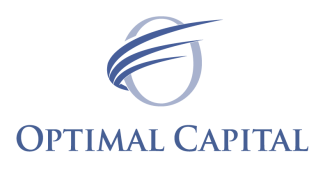
ETFs For Rising Rates
Optimal Capital's CIO Jay Batcha provides insights in ETF.com
There’s a bull in the bond market—and it’s bad for investors.
At least, it’s bad for investors who depend on bonds for income. As bond prices rise, their yields inherently fall, meaning interest payments to bondholders get smaller and smaller.
“In this environment, it’s the retirees who are really hurting,” said Blair duQuesnay, principal and CIO of New Orleans-based Thirty-North Investments. “With 1-2% yields, when you were expecting closer to 6% or 7%, it’s really tough when living on a fixed income.”
With the Fed once again raising rates, some observers predict bond prices will soon cool off, and yields will again rise. Other experts caution that today’s low yields are here to stay for the foreseeable future.
Only time will tell who’s right. Either way, ETFs can help you prepare.
Understanding Low Yields
Rock-bottom yields are not new. In fact, yields have been declining since the 1980s, when then-Fed Chair Paul Volcker successfully curbed the runaway inflation of the 1970s by dramatically jacking up the federal funds rate. (The Fed funds rate is the interest rate at which banks loan each other money overnight; where the Fed funds rate goes, broad market interest rates eventually follow.)
“Since the peak, we’ve had periods of high rates and low ones, but essentially the trend has been downward for 35 years,” says duQuesnay.
But why should a higher Fed funds rate lead to lower bond yields? After all, if interest rates are moving up, wouldn’t bond coupons come along for the ride?
Yes and no. The explanation is a bit complicated.
Let’s back up a second. Unlike stocks, bonds are debt instruments. Bond issuers must make interest payments, known as coupon payments, to bondholders at an interest rate that’s set at issuance. That promise of regular income is, of course, what draws so many investors to bonds in the first place.
When market interest rates are on the rise, it means the new bonds issued today carry higher coupon rates than the bonds issued yesterday. Higher coupons mean higher income, and, of course, investors like income. As a result, prices on older bonds tend to fall, so as to stay competitive with newer bond issues.
Higher interest rates mean falling bond prices and higher yields. Lower interest rates mean rising bond prices and lower yields. Got it?
Don’t Forget Inflation
But wait a minute, you say. Didn’t we just establish that when the Fed raises rates, bond yields drop?
That’s true, and it happens in part because interest rates are intimately tied to inflation (and investor expectations around inflation).
When interest rates are low, consumers can borrow and spend more money, which grows the economy, and thus inflation. So, lower interest rates tend to result in higher inflation, and vice versa.
But higher inflation also tends to result in higher bond yields, since coupon rates on new bond issues must be juiced up to compensate for the fact that interest payments won’t retain as much value over time. Correspondingly, lower inflation usually means lower bond yields.
Inflation has remained anemic ever since the financial crisis. The U.S. economy and the economies of other developed markets have stagnated for the better part of a decade, leading to sluggish inflation and poor yields.
The Fed tried to rev up economic growth again by slashing the Fed funds rate to almost zero—which had the effect of pressuring bond yields even lower.
QE’s Role
The Fed also tried to inject liquidity into the financial system by purchasing large amounts of Treasurys, mortgage-backed securities and other bonds in a process known as “quantitative easing.” QE purposefully pushes bond prices higher and yields lower, in the hopes investors will ditch bonds and seek yield elsewhere, thus getting more money flowing into the economy.
In 2013, the Fed began tapering its QE program, meaning it would no longer use new cash to buy bonds. Yet the Fed still holds roughly $4 trillion in bonds; and whenever those issues mature or make interest payments, the Fed reinvests the cash into more bonds.
“There’s still a lot of bond buying going on,” said duQuesnay. “It’s going to take the Fed a while to unwind its balance sheet.”
Central banks overseas, such as in Europe and Japan, have kept up their own QE programs, which has further suppressed yields in the U.S.
“I don’t think we’re done with QE,” said Jay Batcha, founder and CIO of Optimal Capital in Traverse City, Michigan. “Rates will go higher, but we’re not out of this long-term debt cycle yet. That needs to be worked off. We’ll probably have central banks revisiting QE for some time to come.”
Click here for free access to 100's of articles for your clients
Up Or Down: What’s Next?
Since the Fed began tightening in December 2015, the central bank has raised its Fed funds rate four times. The current target rate, as of June 2017, stands at 1-1.25%. That’s still not much. Nor is it likely the Fed plans any additional rate hikes until the end of the year—if then.
“Unlike other tightening cycles, there just hasn’t been much inflationary pressure,” noted Natalie Zahradnik, ETF strategist and executive VP for PIMCO. “So the Fed was able to be much more gradual in raising rates.”
The modest rate hike we’ve seen has pushed up interest rates, especially short-term ones, though there’s been considerably less movement in longer-term rates. In Treasurys, this has led to a flattened “yield curve” (a yield curve measures yields across the full date range of maturities, from one month to 30 years).
The elephant in the room is, of course, where interest rates go from here.
“The hardest thing in the world to predict is where rates are headed,” said Batcha. “The global economy is strengthening, so we think rates are likely going up. But with so much debt in the market, the economy probably can’t support significantly higher rates, not for a while.”
Zahradnik, for her part, predicts the market has entered a “new neutral” of persistently lower rates and yields. “We think the end destiny of the Fed’s tightening will be lower rates than in the past,” she says. “It’s an adjustment downward of the economy, driven by demographics, structural changes and lowered growth expectations.”
ETFs For Rising Rates
With yields so stubbornly low, ETF investors have had to start thinking creatively about their bond exposures. Although ThirtyNorth still uses the Vanguard Total Bond Market ETF (BND) where appropriate, duQuesnay says the days are gone where you could just buy the total market and be done with it.
“The aggregate bond indexes have become heavily weighted toward government securities, which are yielding the lowest,” she explained. “You need other alternatives to increase your yield without taking on more risk.”
One such alternative she likes is the Vanguard Short-Term Bond ETF (BSV), which has a duration of 2.8, compared with BND’s duration of 6.2. (Duration measures a bond or bond portfolio’s sensitivity to interest rate risk; lower duration means lower sensitivity.)

Todd Green, CIO of Pittsford, New York-based Alesco Advisors, has also reduced the duration of his bond allocations. He opts for variable rate ETFs, such as the $6.4 billion iShares Floating Rate Bond ETF (FLOT), which holds bonds whose coupon rates reset periodically.
“The market has reacted to lower interest rates by driving up duration to levels that are extreme from a historical perspective,” he said. “So we use FLOT to position ourselves on the front end of the yield curve, where rates have risen and we expect they’ll continue to rise.”
Benefits Of Active
Another option, notes Zahradnik, is active management. Her firm, PIMCO, has issued several of the most popular active bond ETFs, including the $2.1 billion PIMCO Active Bond ETF (BOND) and the $7.3 billion PIMCO Enhanced Short Maturity Active ETF (MINT).
“Active managers can access different liquidity premiums, perform independent credit analysis, and retain the flexibility to buy and sell at the most opportune times,” she said.
But some advisors, in their hunt for yield, have even turned to strategies that eschew bonds entirely. Batcha’s firm, Optimal Capital, uses hedge fund strategies that provide the same historical returns as bonds, and the same volatility profile as bonds, but that don’t use bonds at all.
“We think the risk/reward on bonds is asymmetrically bad,” noted Batcha. “Treasurys won’t protect you right now. You have to do something different.”
He likes the Reality Shares DIVS ETF (DIVY), which uses derivatives to isolate exposure to the growth rate of S&P 500 dividends. Institutions have used a similar strategy for years. “With DIVY, it doesn’t matter what interest rates or stocks do,” he said. “If the S&P 500 grows its dividends by 7%, then that’s what you get.”
It’s not that Batcha doesn’t use bonds at all, he does; including the SPDR DoubleLine Total Return Tactical ETF (TOTL). But in a rising rate environment, Batcha says, it pays to think outside the box.
“We’re going to plug in whatever vehicles will give us the risk and return profile we’re looking for,” he added.
by Lara Crigger. This article appears in ETF.com's October 2017 issue of ETF Report.


